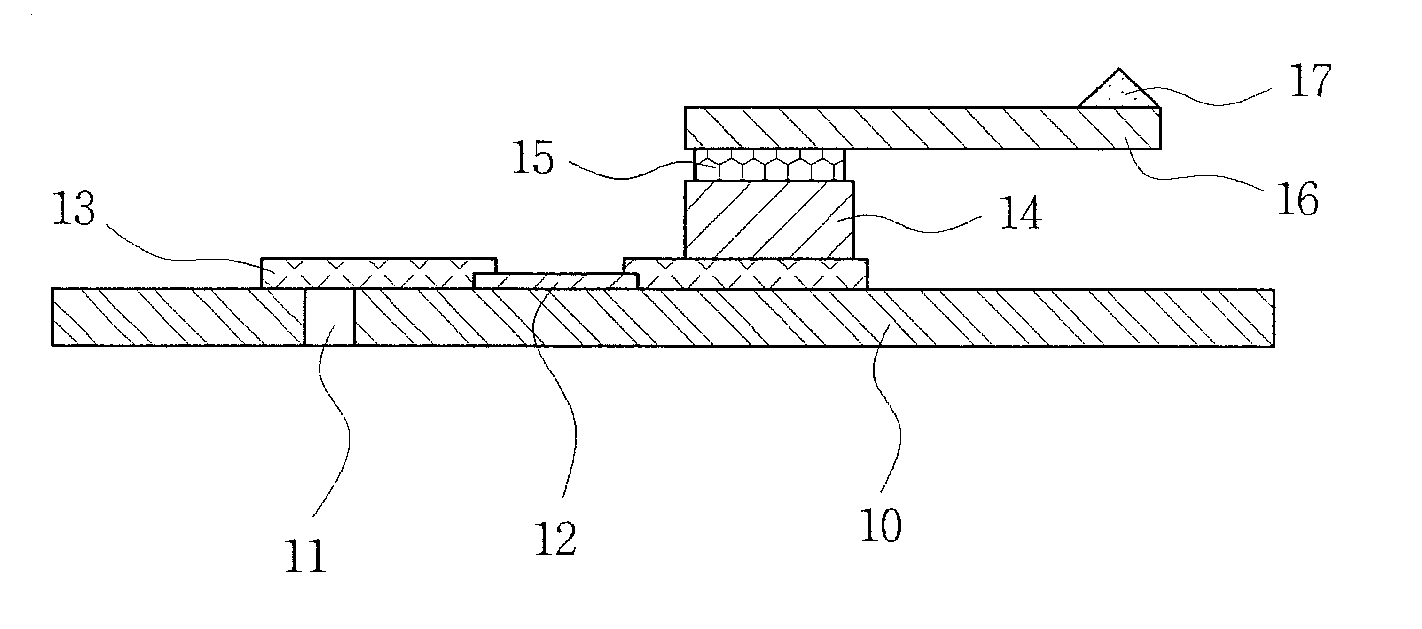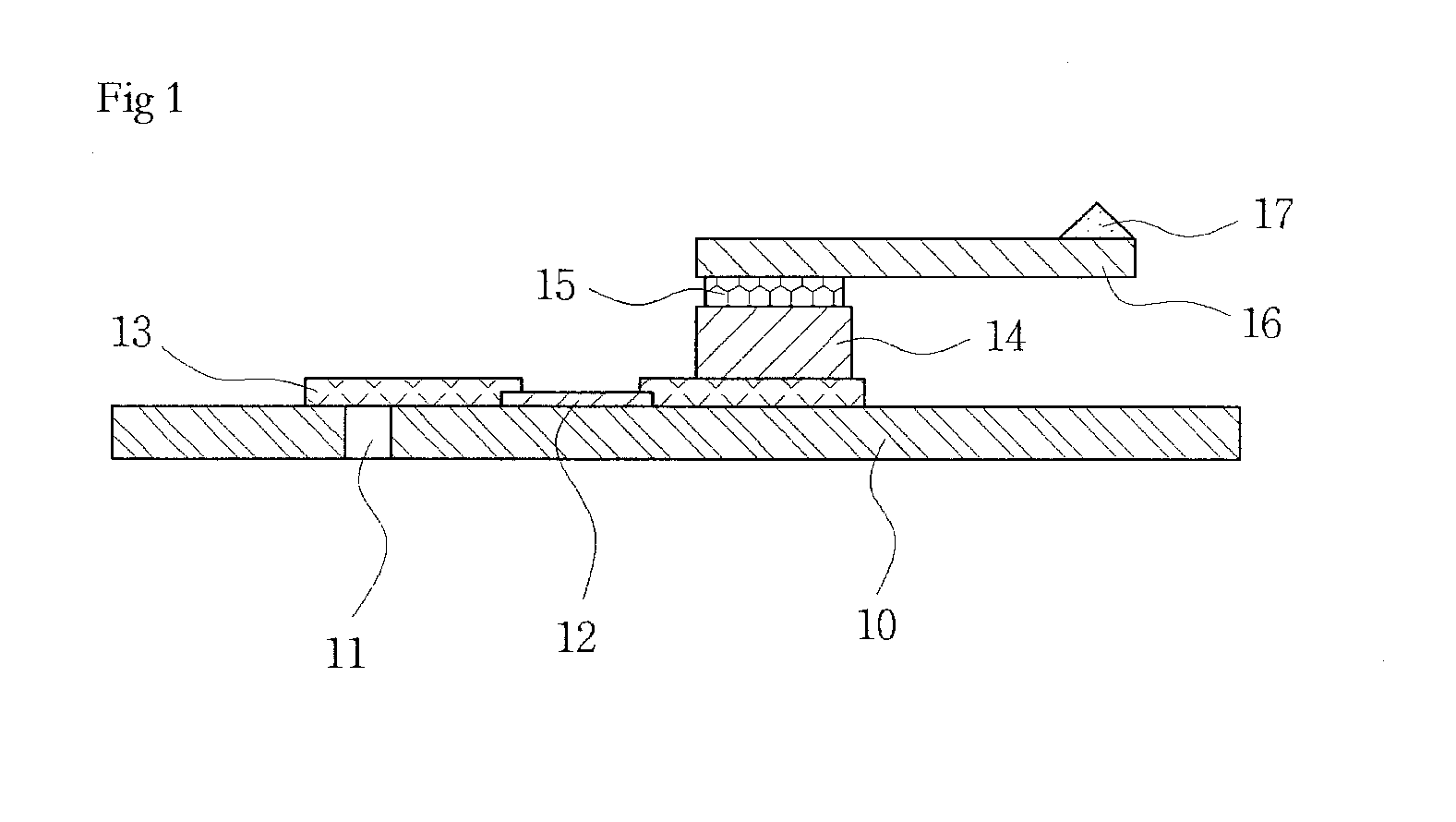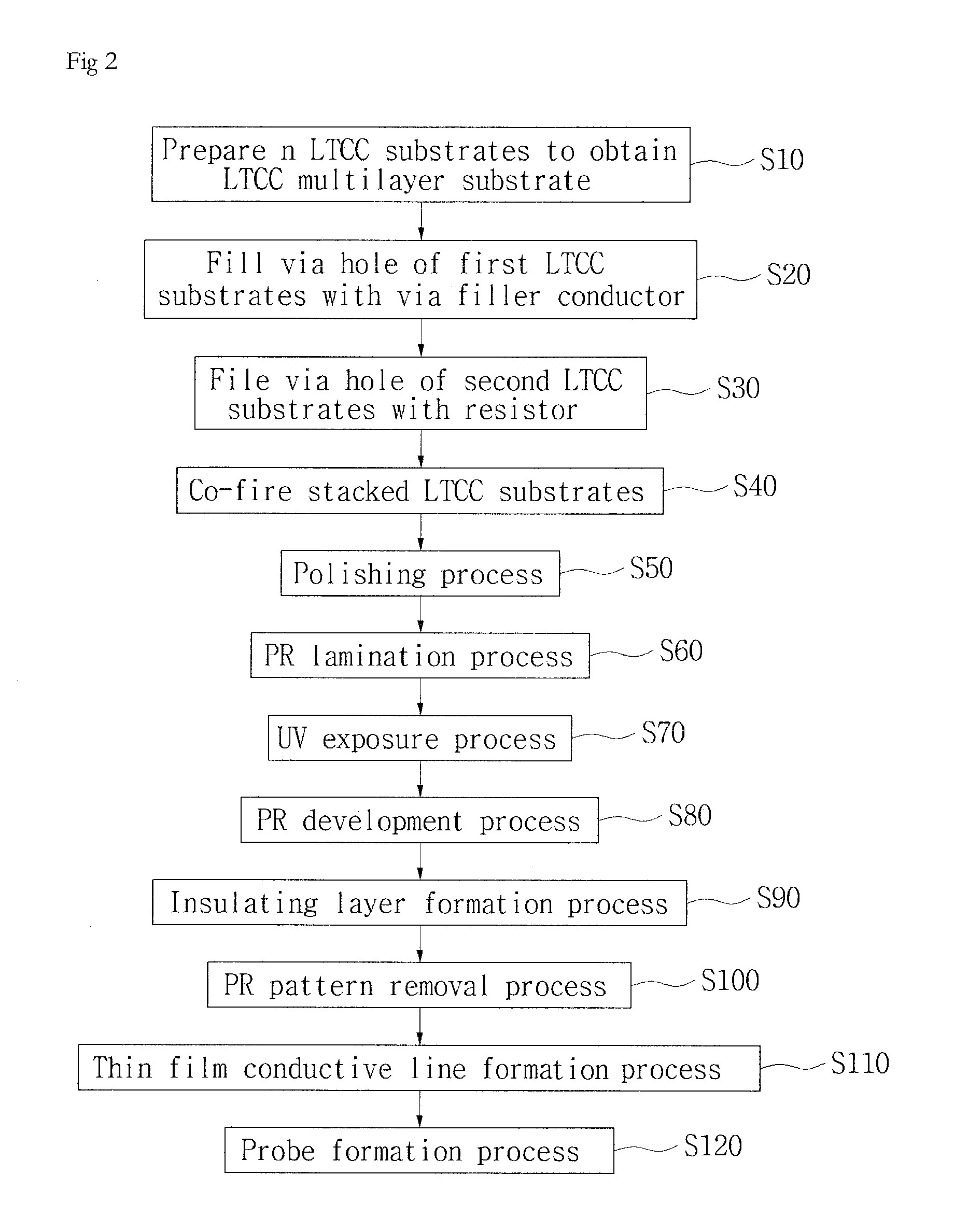MEMS probe card and manufacturing method thereof
- Summary
- Abstract
- Description
- Claims
- Application Information
AI Technical Summary
Benefits of technology
Problems solved by technology
Method used
Image
Examples
first exemplary embodiment
FIG. 2 is a diagram illustrating a method for manufacturing a MEMS probe card in accordance with a first exemplary embodiment of the present invention, and FIGS. 3 to 10 are diagrams illustrating the individual processes shown in FIG. 2.
As shown in FIGS. 2 and 3, in this exemplary embodiment of the present invention, n LTCC substrates are prepared to obtain an LTCC multilayer substrate 100 (S10). The number of layers of the LTCC multilayer substrate 100 may vary according to the substrate design and is preferably 20 to 30 layers according to the test conditions of semiconductor chips. Here, silver (Ag) is mainly used as a material for a metal wiring, and the composition may vary, if necessary. Moreover, ceramic materials used in the LTCC substrate include more than 60 to 70% glass and the remaining alumina. The thickness of each LTCC substrate may vary according to requirements of customers, and is preferably 4 to 7 mm.
Meanwhile, a via hole 1 penetrates each LTCC substrate, and a co...
second exemplary embodiment
FIG. 11 is a diagram illustrating a method for manufacturing a MEMS probe card in accordance with a second exemplary embodiment of the present invention, and FIGS. 12 to 21 are diagrams illustrating the individual processes shown in FIG. 11.
As shown in FIG. 12, in this exemplary embodiment, an LTCC multilayer substrate 100 including n LTCC substrates are prepared (S10). The number of layers of the LTCC multilayer substrate may vary according to the substrate design and is preferably 20 to 30 layers. Here, silver (Ag) is mainly used as a material for a metal wiring, and the composition may vary, if necessary. Ceramic materials used in the LTCC substrate include more than 60 to 70% glass and the remaining alumina. The thickness of each LTCC substrate may vary according to requirements of customers, and is preferably 4 to 7 mm. In FIG. 12, reference numeral 1 denotes a via hole (through hole) formed in the substrate, and reference numeral 2 denotes a conductive line formed in the subst...
PUM
| Property | Measurement | Unit |
|---|---|---|
| Temperature | aaaaa | aaaaa |
| Thickness | aaaaa | aaaaa |
| Dielectric polarization enthalpy | aaaaa | aaaaa |
Abstract
Description
Claims
Application Information
 Login to View More
Login to View More - R&D
- Intellectual Property
- Life Sciences
- Materials
- Tech Scout
- Unparalleled Data Quality
- Higher Quality Content
- 60% Fewer Hallucinations
Browse by: Latest US Patents, China's latest patents, Technical Efficacy Thesaurus, Application Domain, Technology Topic, Popular Technical Reports.
© 2025 PatSnap. All rights reserved.Legal|Privacy policy|Modern Slavery Act Transparency Statement|Sitemap|About US| Contact US: help@patsnap.com



